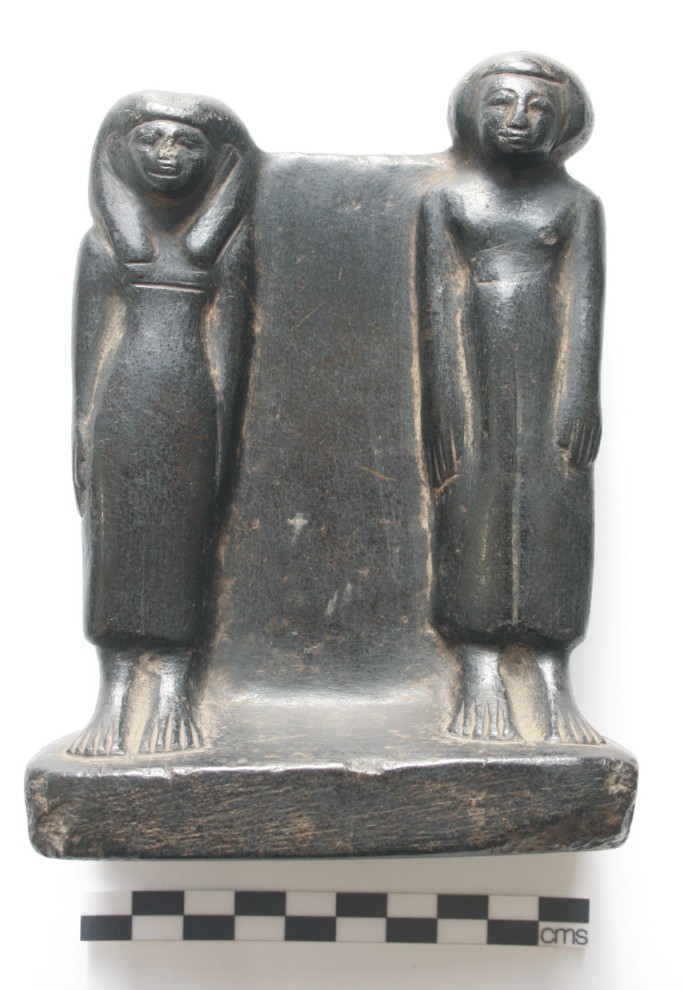W847
{loadposition share}
W847
 Black steatite sculpture of male and female, presumably a man and his wife. Late Middle Kingdom-Second Intermediate Period.
Black steatite sculpture of male and female, presumably a man and his wife. Late Middle Kingdom-Second Intermediate Period.
This is said to come from Aswan (on earlier catalogue cards), in Upper Egypt, and it may be that it was formerly part of the Grenfell collection purchased by Sir Henry Wellcome at auction in July 1920. As the Centre has other items from this source it is possible that this too was part of that group.
Similar statues were placed in tombs and in temples during the Middle Kingdom but this small statue probably comes from a tomb. Men’s tomb settings usually depicted female relatives, usually the wife, probably as an aid to rebirth. The wife’s role was important as man metaphorically impregnates her with himself as ‘bull of his mother’ (Roth 1999, 42). Atypically, here the man stands on the left, and the woman on the right, the place of honour. Men and women are usually shown the other way round, with the man in the dominant position.
Male figures wearing these long, high-waisted kilts were first introduced during the 12th Dynasty and the figures with hands flat against kilts in the later Middle Kingdom. She wears so-called ‘sheath dress.’ Vogelsang-Eastwood (1993, 96-106) suggests that these were not tight dresses but rather wrap around garments made out of a large length of cloth.
Other items collected by Grenfell include: W846
This item is published in Malek et al. (1999, 331). For information on Middle Kingdom art see Bourriau (1988).
Further reading:
Bourriau, J. 1988. Pharaohs and Mortals. Egyptian Art in the Middle Kingdom. Cambridge: Cambridge University Press.
Malek, J., Magee, D. and Miles, E. 1999. Topographical Bibliography of Ancient Egyptian Hieroglyphic Texts, Statues, Reliefs and Paintings, VIII, Objects of Provenance Not Known, Part 1. Royal Statues. Private Statues (Predynastic to Dynasty XVII). Oxford: Griffith Institute.
Roth, A.M. 1999. The absent spouse: Patterns and taboos in Egyptian tomb decoration. Journal of the American Research Centre in Egypt. 36, 37-53
Russmann, E.R. 2001. Eternal Egypt. Masterworks of Ancient Egyptian Art from the British Museum. London: British Museum Press.
Vogelsang-Eastwood, G. 1993. Pharaonic Egyptian Clothing. Leiden, New York and Köln: Brill.